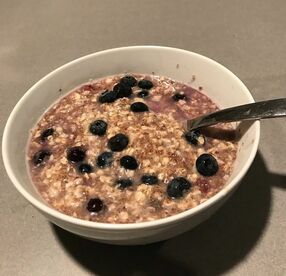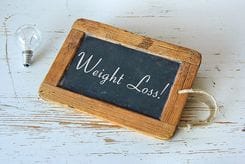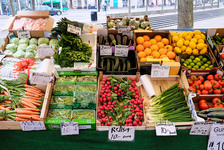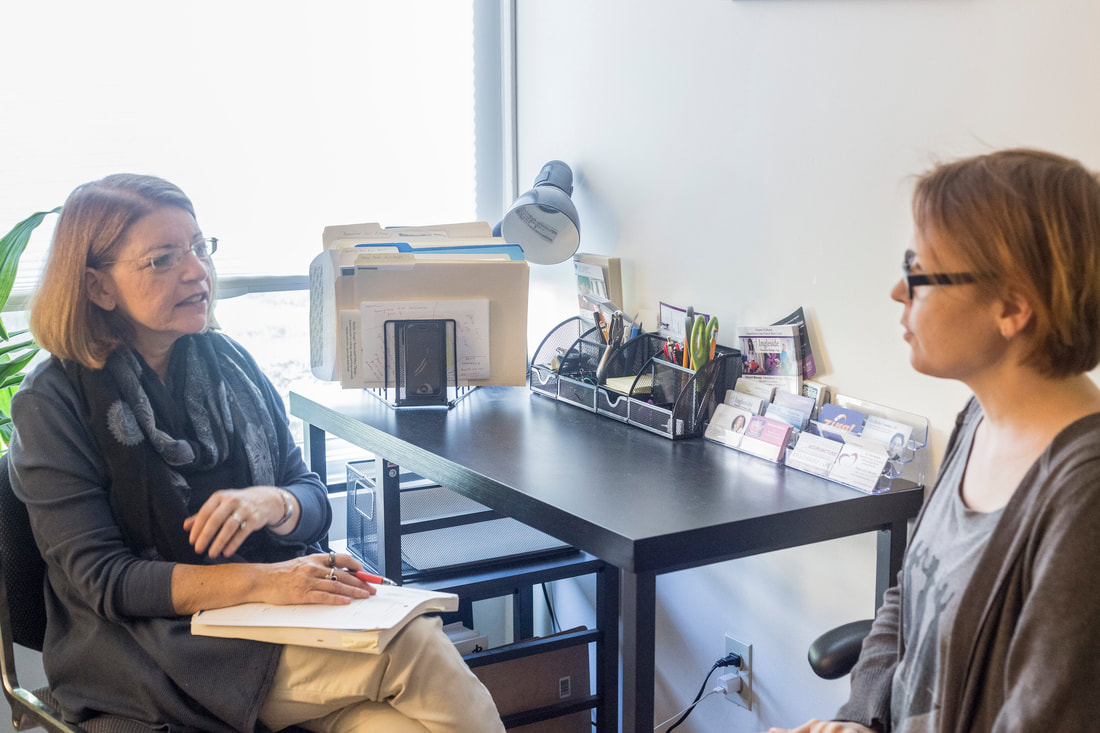 I'm truly on a mission to help you live healthier. I keep sharing things that have worked in my own life. Some of you know how jazzed I've been about my "miracle breakfast." I started eating this when I realized that I wasn't getting enough fiber in my diet, even with eating whole grains and lots of veggies. (We should be getting between 30 to 50 grams of fiber a day. Average Americans only get 8-15 grams.) I knew I had to make some changes. I realized that I was often leaving the house with a Kashi bar and not eating a full breakfast. So I switched to a really healthy bowl of oatmeal with lots of yummy stuff. Why oatmeal? From a Chinese medicine perspective it's a food that strengthens the digestive and nervous systems, removes cholesterol from the body, and renews bone and connective tissue. From a sense of ease perspective, it's something that can be prepared in minutes and available wherever you are. (Just be sure that it's the kind with no added sugar.) I often bring packages of instant oatmeal and a mix of almonds, flaxseed and fiber when I'm traveling. Here's my miracle breakfast with amounts of fiber. 1 package instant organic oatmeal 4 grams 1/4 cup almonds 3 grams 4 TBS ground flaxseed 6 grams 1/3 cup Trader Joes Frozen Berry Medley 3 grams 1 TBS Great Shape Natural Fiber Supplement* 5 grams ________ 24 grams *You might want to add this slowly to avoid gas and bloating. If I still haven't convinced you, take the challenge. Try starting everyday for 3 weeks with my miracle breakfast. Let me know how you feel. Interested in learning more about how to live a healthy life with ease? Find out about my Roadmap to Health 6 Week Class. Wishing you health and well-being, Bonnie
0 Comments
 Acupuncture and Weight Loss Acupuncture and Weight Loss Nutrition is a part of the tradition of acupuncture. A balanced diet is considered essential to good health. Eastern nutrition focuses on the energetic qualities of food. Certain foods (like dairy products) cause cold and dampness in the body – both of which weaken the digestive system. Certain foods (like ginger) are warming and help strengthen digestion. When I work with patients around nutrition and weight loss, my approach is fivefold:
I’ll share a weight-loss secret that has helped me take and keep off those few extra pounds. Eating well and obtaining and maintaining your ideal weight is within your reach. The wisdom of acupuncture can give you the tools that you need to love and nourish your body for life.  Acupuncture is about balance in the body. One of the best ways to create this is by eating a balanced diet. Healthy foods in your kitchen are the easiest way to accomplish this. Just follow these 5 steps. Step One: Clean out your pantry and refrigerator by removing these foods:
Note: If you absolutely cannot throw out food, put these unhealthy foods on one shelf in a cabinet and/or your refrigerator and do NOT replenish them once you have finished eating them. Step Two: Make a list of foods that you use on a regular basis that you want to have in your kitchen at all times. My list looks something like this:
Step Three: Plan your week's meals. These should be based on real food -- no chemicals, hormones or additives. In thinking about menus keep this in mind: vegetables and fruits should take up half your plate, grains one quarter of your plate and healthy proteins one quarter. Step Four: Make a grocery list Include any items on the list of foods that you use on a regular basis that you don’t have. You’ll want to restock these when you run out. Add whatever additional foods you’ll need for the week's meals. Step Five: Go grocery shopping. Buy ONLY the items on your list. Go food shopping after you have eaten and are not hungry. Repeat steps three through five each week. You’ll be feeling fabulous in no time at all. |
AuthorIn practice for over 20 years, Bonnie Diamond offers individualized, heart-centered care using a pain-free, Japanese style of acupuncture. Her work is influenced by her nine year struggle with and complete recovery from Chronic Fatigue Syndrome. Archives
April 2024
Categories
All
|
Serving Easthampton, northampton, Holyoke, Springfield, Chicopee, Westfield and Western Massachusetts
|
Hours are Tuesday-Thursday, 11am-7pm
|
247 Northampton Street, #27 Easthampton, MA 01027 781-718-6325 Get directions Get information on other complementary health resources recommended by Staying in Balance. Pioneer Valley Community Resources |
Copyright 2000-2022 All rights reserved.

